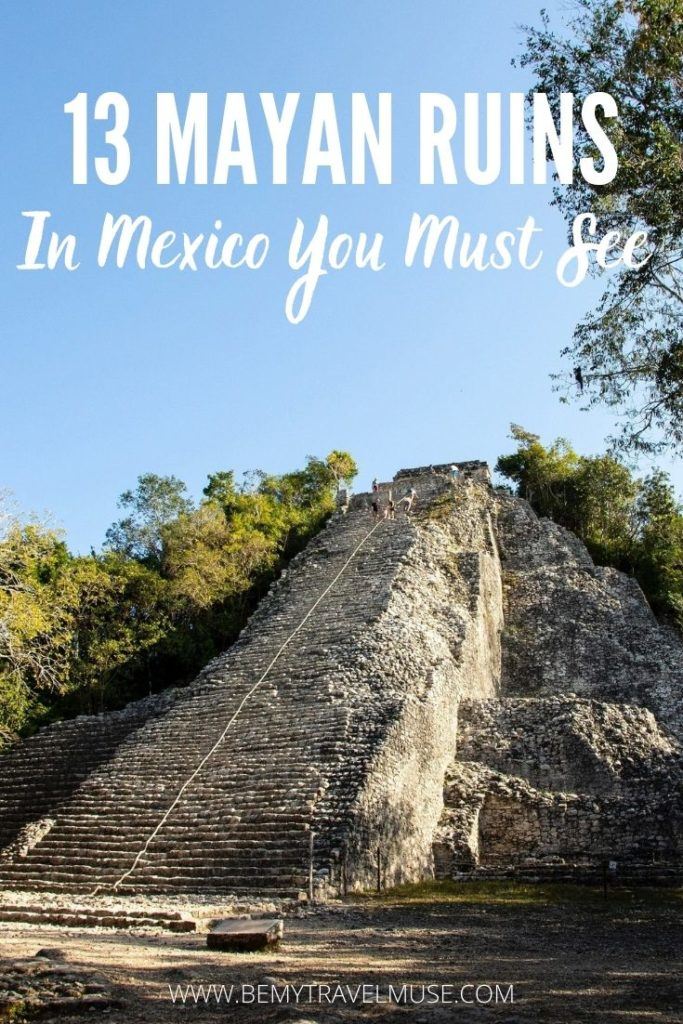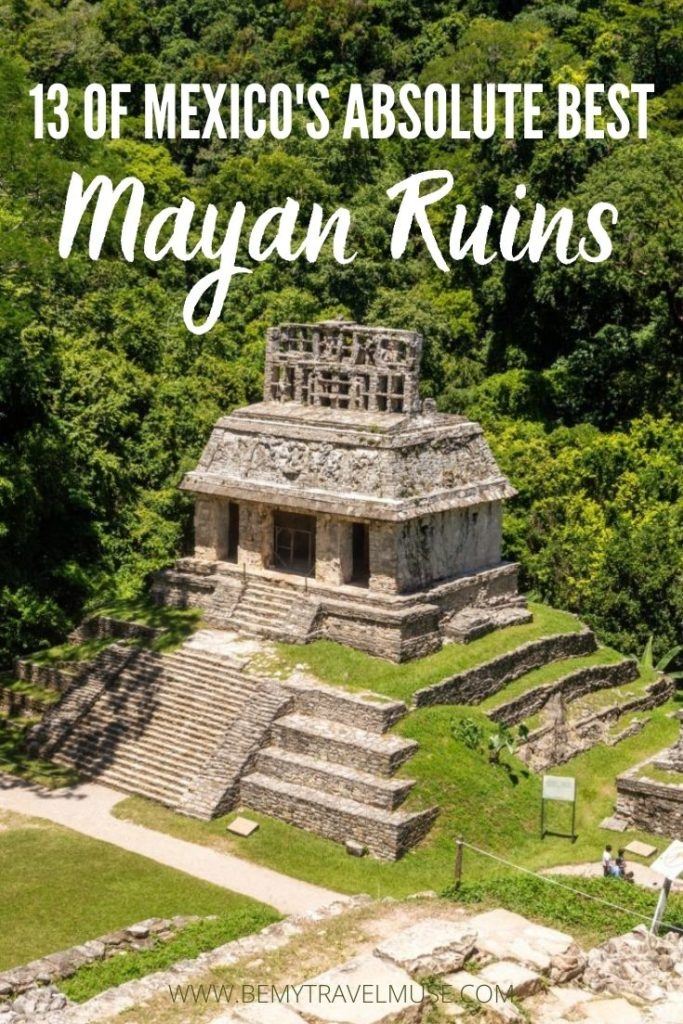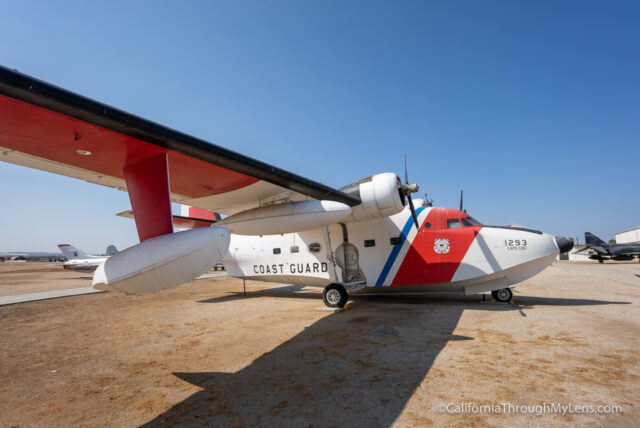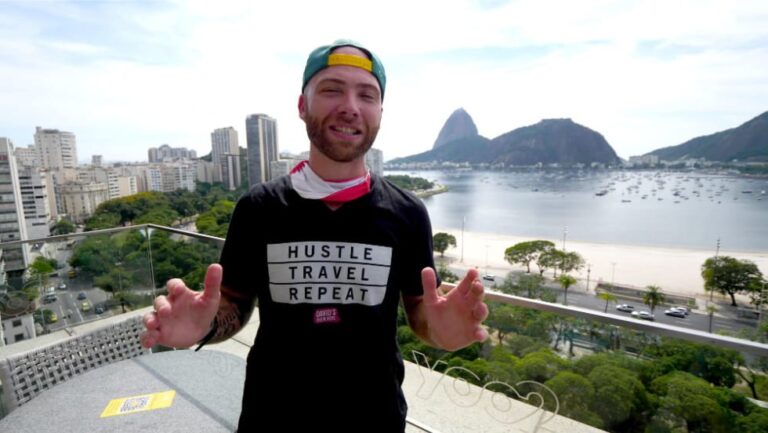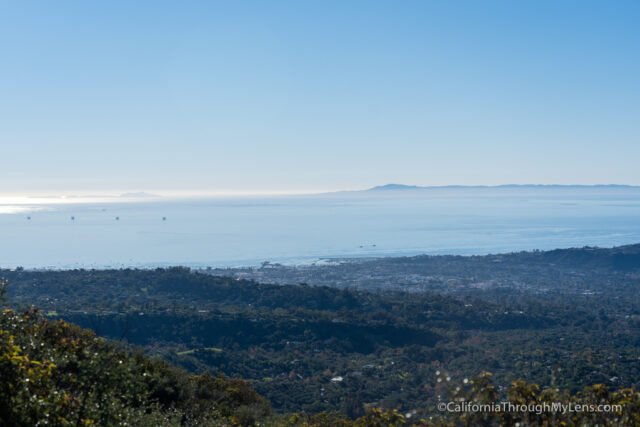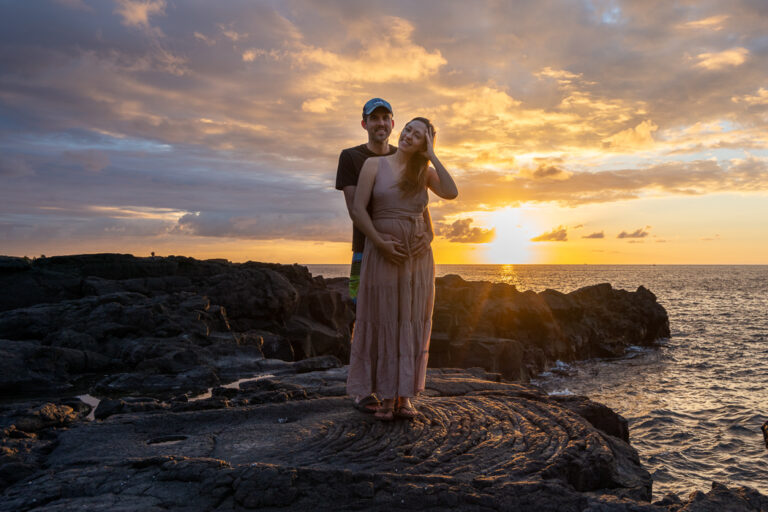Becán is still very much off the regular tourist track, so you can expect to see very few people there at any given time of year and any time of day. Keep in mind that it gets very hot and humid in Campeche, so visiting in the early afternoon isn’t advisable unless you are totally okay with intense heat.
If you do anything while you’re in Chiapas, go to Palenque. It’s an absolute must-see archaeological site and by far my favorite in Mexico. I’ve been there several times, and what keeps me coming back is the fact that archaeologists are discovering new things about Palenque every year. In fact, only 10% of the settlement has been fully excavated, meaning there will be more and more discoveries to come.
I recommend you start your visit right when the site opens up at 9am in order to avoid the afternoon heat as much as possible. The area is quite buggy, so make sure you bring some eco-friendly bug repellent. While much of the site is within the jungle, if you decide to venture out to the lagoon, you’ll definitely want to make sure to have sunscreen (reef safe, please!) because the midday sun is intense out there.
A great feature of Ek Balam is the cenote next to the archaeological site. It is called Cenote Xcanche, and it’s an additional 70 pesos (.50) to get in.
While Chichén Itzá is easily the most visited and most crowded archaeological site in the whole Mayan world, it’s a must-see. I know that going to a crowded place is a big turn-off for many people, but the history and importance of Chichén is too mind-blowing to pass up.
Restoration began on Ek Balam in 1997, so it is still a relatively new archaeological site. Tourism there has only just picked up in the last five years, so now is a great time to go check out the site before it explodes in popularity.
Quintana Roo
While Uxmal doesn’t draw the same crowds as Chichén Itzá, it has been gaining popularity steadily and is definitely one of the most visited sites in the state. To avoid the crowds as much as possible, visit as early as you can. Just like Chichén, I suggest arriving a few minutes before the site opens. I know that’s early, but the midday sun in this area is intense in the dry season. In the wet season (May to October), rain is most frequent in the afternoons. Either way, a morning visit will yield nice weather and fewer visitors.
Said to mimic the layout of the ancient city of Teotihuacán near Mexico City, this site is intriguing and packed with historical significance. The Itzá family from Chichén Itzá also had great influence in Edzná, and therefore much of the architecture is reminiscent of Chichén. Like many Mayan cities, it is still a mystery why the inhabitants of Edzná abandoned it.
13. Cobá
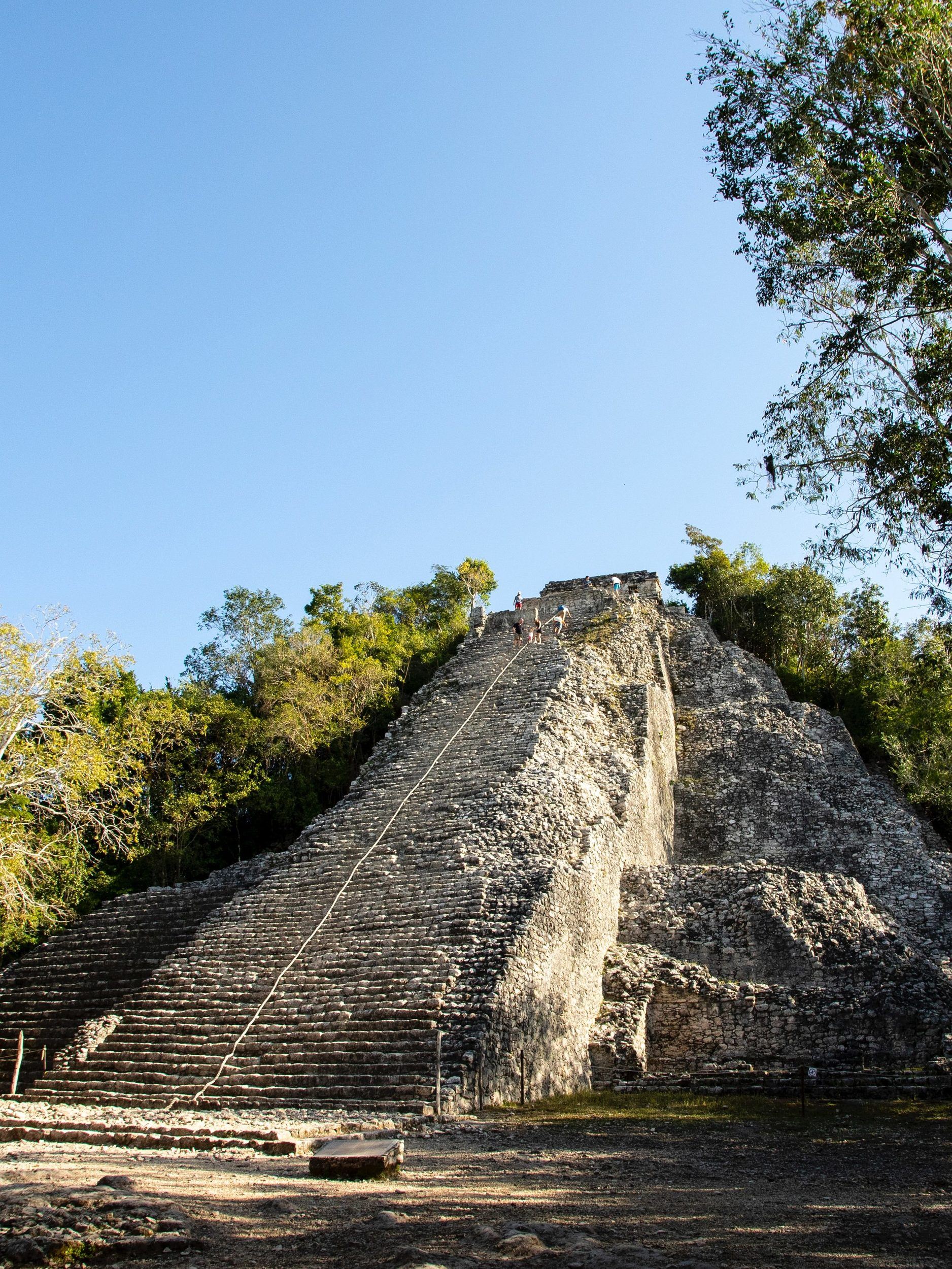
Since the site is free on Sundays for Mexican residents, it’s best to avoid visiting on that day. To avoid crowds and scorching hot temperatures, visit in the early morning, right as the site opens up. Between 8am and 11am is the sweet spot.
Just like other popular sites, visiting Palenque in the early morning is ideal. There’s plenty of shade to cool off in if you do decide to visit in the afternoon, but it will be more crowded from late morning to late afternoon. Bring plenty of bug spray, as the humidity lends itself to some intense swarms of mosquitoes! The best time of year to visit is between November and March, when it’s cooler and drier.
The site’s largest pyramid Nohoch Mul used to be accessible for climbing. I reached the top back in 2017, and the view is impressive. Due to COVID-19 restrictions, however, the site does not currently allow visitors to climb it. Fingers crossed they open it again someday!
Next time you head to Mexico, consider making a stop at a few of these sites and learning more about the Mayas. For more ideas on things to do in the Yucatán Peninsula, check out our Bacalar or Tulum guide and things to do in and around Cancún. Heading to Chiapas? Get a head start on planning with our Chiapas guide and things to do in San Cristóbal de las Casas.
- Cost: 80 pesos ($4 USD) entrance fee
- Hours: 8am to 5pm daily
- Transportation: There are ADO and Mayab buses that go to Cobá from Tulum for about 50 pesos ($2.50) each way. Make sure to check the schedule, as the trips are sparse throughout the day. There are also colectivos that run between Tulum and Cobá, which you can find outside the ADO station in Tulum. However, renting a car is the best option for visiting.
- Parking: There is a fee of 50 pesos ($0.25) per car.
- Getting around inside: You can rent a bike for the day for 50 pesos ($2.50) or a bike taxi for 70-100 pesos ($3.50–5), plus tip.
- Guides: Bilingual guides are available at the entrance for around 200 pesos ($10). You can haggle for both a guide and bike taxi for about that price as well.
- Tours: There is a tour that includes a visit to a cenote, along with a guide for the Cobá ruins. Book on GetYourGuide.
12. Tulum
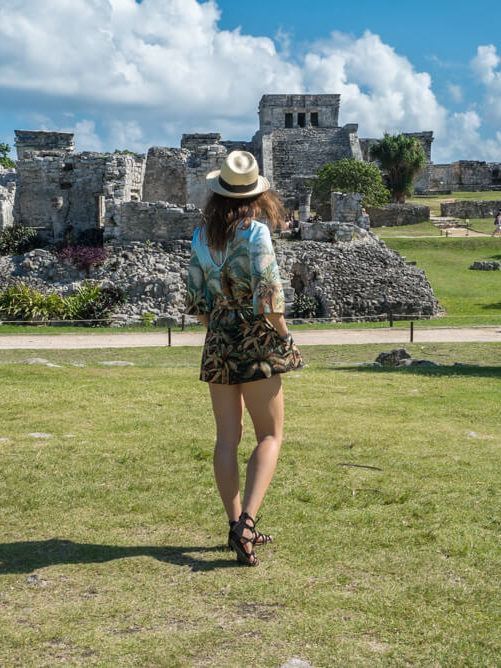
While you won’t find a stand with guides available for hire at Bacán, there are plenty of signs that have English explanations for each of the structures to guide your visit. All of the buildings, including the largest pyramid, are accessible for climbing if you fancy a higher-up view of the grounds.
To avoid the crowds as much as possible at Chichén, go on a weekday and get there 15 minutes before the site opens. That way, you’ll likely be toward the front of the line to buy tickets and you can get in right away. Avoid going on the weekends at all costs, as that is the busiest time. It only takes about 2 to 3 hours to see everything.
The architectural style of the buildings at these sites is unique to this state, which is a testament to the diversity of decorative art, dialects, and traditions in the Mayan world.
- Cost: 80 pesos ($4) entrance fee
- Hours: 8am to 5pm daily; the ticket booth closes at 3pm
- Transportation: From anywhere in Tulum, you can either walk, ride a bike, or take a taxi to the Tulum Archaeological Zone. Another option is to take a colectivo from the centro, which costs just 20 pesos ($1). From Playa del Carmen, you can take an ADO bus to the Tulum ruins for just 50 pesos ($2.50).
- Parking: There is a fee of 180 pesos ($9) for the entire day.
- Getting around inside: While the ruins are quite spread out, you can easily walk through them.
- Guides: Hiring a guide for these ruins is quite expensive, at around 400-600 pesos ($20-30 USD). Consider a tour, which includes more than just the guide, to get more bang for your buck.
- Tours: Since going in the morning is the best way to see the ruins, check out this half-day Tulum tour, which begins early in the morning.
11. Muyil
Campeche is a state that often gets overlooked because of its proximity to super touristy Yucatán and Quintana Roo. I think Campeche is underrated and deserves more recognition! This vibrant state is known for its history of pirates, its delicious seafood, and all the brightly colored buildings in its charming cities.
The site is full of places where sacred geometry was a critical part of the city’s construction. For example, the architects of the Kukulcán pyramid were so connected with earth’s rotation that they figured out how to position it to make shadows dance down the pyramid like a snake during the spring and autumn equinox.
I recommend hiring a guide and visiting the on-site museum. A quick zip through it will provide enough historical information to appreciate the ruins, but having a guide present to answer questions is the best way to get the most out of Palenque.
This state is one of the least populated in Mexico, and much of it is covered by jungle, including the Calakmul Biosphere. The government has gone to great lengths to preserve the biodiversity of Campeche, so a visit to any of these ruins also promises an impressive look into the flora and fauna of the area.
- Cost: 45 pesos ($2.25) entrance fee, plus 50 pesos ($2.50) to enter the Sian Ka’an Biosphere area
- Hours: 9am to 5pm daily; the ticket booth closes at 3pm
- Transportation: From Tulum, you can take a colectivo going toward Chetumal or Felipe Carrillo Puerto. Tell the driver you want to get off at Muyil. The entrance to the ruins is right off the highway. You can also very easily take a taxi from Tulum for around 200 pesos ($10).
- Parking: There is a free parking lot right at the entrance.
- Getting around inside: You can easily get around on foot at the archaeological zone itself, but if you go into Sian Ka’an, you might need to hire boat transportation to get to different parts of the biosphere.
- Guides: Finding a guide to Muyil is tricky. There isn’t a specific stand there where you can hire a guide, like there are at other more popular sites. Doing a tour is the best way to learn about Muyil.
- Tours: Take advantage of Muyil’s proximity to the Sian Ka’an Biosphere with this Birdwatching and Guided Walk Tour!
Yucatán
Uxmal was the first Mayan ruin that I ever visited, so it’s a bit sentimental for me. The sprawling site includes towering structures, detailed carvings, and the famous Yucatecan iguanas. I don’t know why, but seeing so many iguanas running around Uxmal really stuck with me.
10. Chichén Itzá
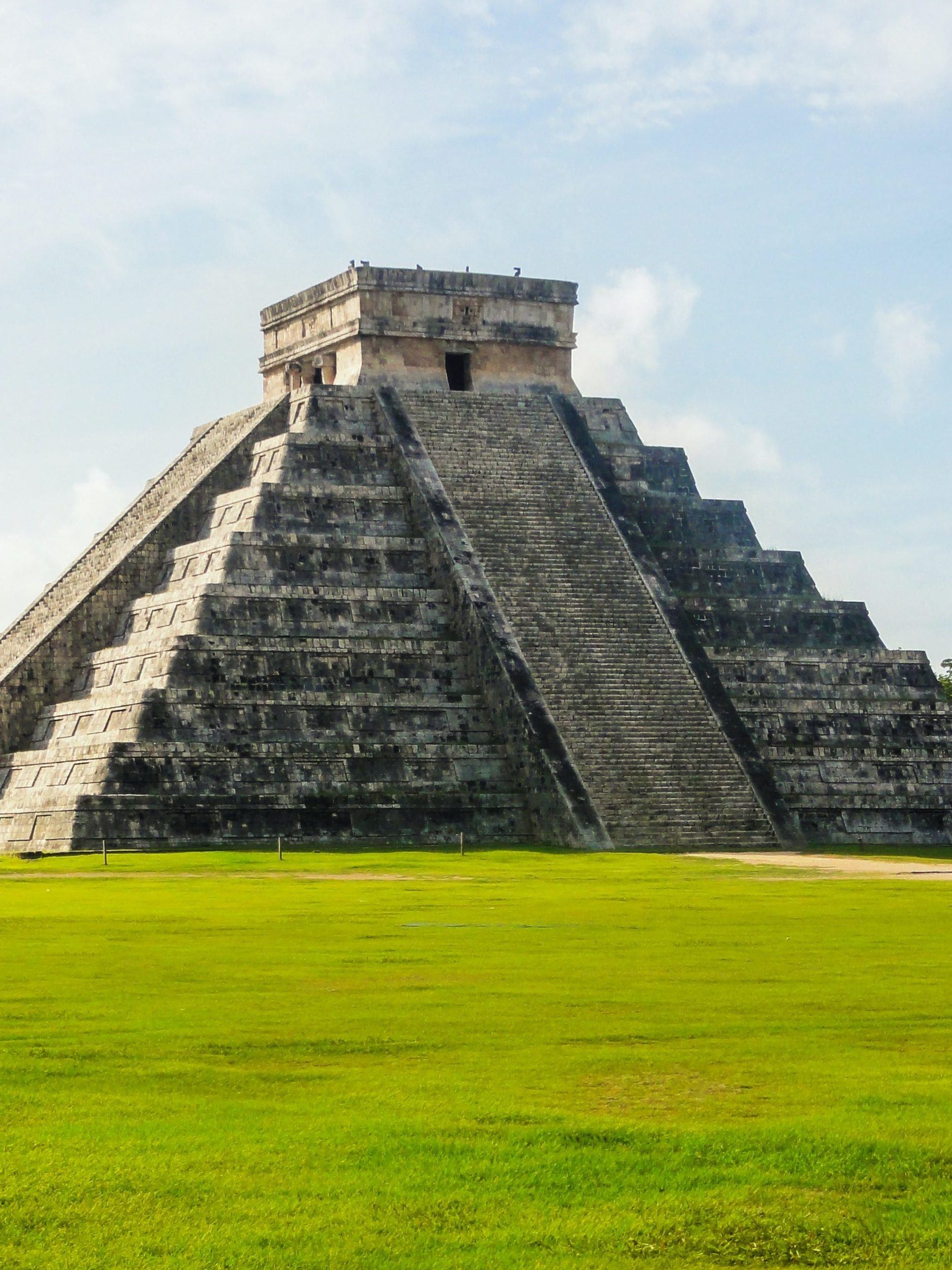
This small site is just off the highway about 15 minutes south of downtown Tulum. It’s one of the few ruins in the area where you can expect to see very few people at any given time, with the exception of Sundays, when the park is more crowded.
The small size of Mayapán means you could spend 1-2 hours exploring everything. In one hour you could easily roam around, see the sites, and take pictures. If you’re a die-hard archaeology fan that wants to read every placard, 2 hours is enough time.
I suggest going early to Ek Balam, spending 1-2 hours checking out the ruins and climbing the pyramid, and then taking a dip in the cenote in the late morning or early afternoon. That way, you’ll avoid the crowds as much as possible. The site doesn’t allow food or drinks besides water, and there aren’t very many food options nearby, so make sure to fuel up before you go!
Yaxchilán has a lot of historical significance for the Mayan Empire, but what makes it worth visiting is its location. To get there, you have to take a boat along the Usumacinta River, and the surrounding nature is absolutely breathtaking. The trip feels like something straight out of an Indiana Jones movie, making it perfect for adventure lovers.
- Cost: 539 ($27) pesos for adults, free for children under 13. You will pay at two separate ticket windows.
- Hours: 8am to 5pm daily; the ticket booth closes at 4pm. For updates on special hours for holidays and events, check out the official website of Chichén Itzá.
- Transportation: Getting to Chichén Itzá is easiest from either Mérida, Valladolid, or Cancún by taking an ADO bus. Check out the ADO schedule and buy tickets at the closest station the day before.
- Parking: If you have rented a car, you can park at the entrance of the site for 80 pesos ($4).
- Getting around inside: The entire site is completely walkable.
- Guides: I 100% recommend getting a guide for Chichén Itzá in order to truly appreciate the site and learn about its significant history. You can hire an English-speaking guide at the site itself for about 600 pesos ($30).
- Tours: If you’re staying in Cancún or Riviera Maya, an all-inclusive tour with a stop in Valladolid is a great option. If you’re in Mérida, consider a full-day tour with lunch.
9. Mayapán
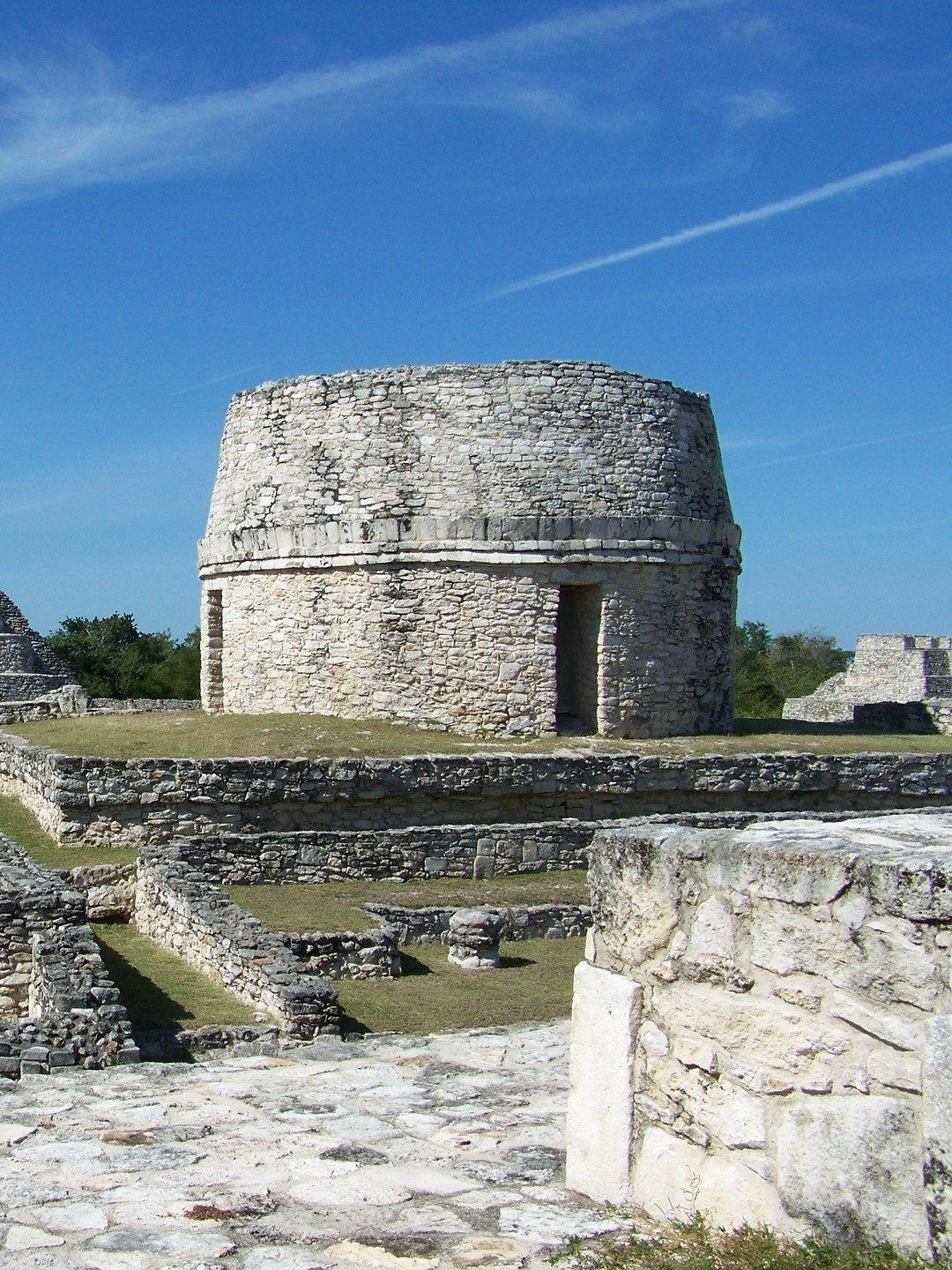
There are few places in the world where ancient ruins jut up from the coastline like they do in Tulum. This archaeological site is absolutely breathtaking. I know it’s one of the most popular places on the Riviera Maya, and some people might say it’s overrated, but think it’s genuinely one of the coolest things to see in the area.
The Pyramid of the Magician is a must-see. It’s the tallest building at Uxmal, with a height of almost 115 feet and rounded corners. Unfortunately, you cannot climb it, but you can climb to the top of the Great Pyramid to get an excellent view of the grounds. The Nunnery Quadrangle has the most intricate carvings in Uxmal and was fully restored recently.
Only a small portion of the 27-square-mile city is open to the public, but it includes a 148-foot pyramid that you can climb to the top of. The view of the biosphere from up there is breathtaking. While not as popular as Chichén and Tulum, Calakmul is the most visited archaeological site in Campeche, so you’ll find more people there than you would at Becán or Edzná.
Bonampak has the best Mayan Empire murals that have yet been discovered. These frescoes tell the story of the ancient city of Bonampak in great detail, giving archaeologists a clear look into the past. You’ll find these incredible paintings in three different structures. In an effort to preserve them, only 150 people are allowed into the site per day, and only four people are allowed in each building at a time.
- Cost: 45 pesos ($2.25)
- Hours: 8am to 5pm daily, even on holidays
- Transportation: The archaeological site is a few miles south of Telchaquillo, which is 25 miles south of Mérida. You can take an ADO bus from Mérida to Telchaquillo and then a taxi to the ruins. The trip is quite far if you’re staying in Cancún or anywhere else on the Riviera Maya, so it’s wise to stay the night in Mérida or Izamal.
- Parking: Free
- Getting around inside: The entire site is completely walkable.
- Guides: The only facilities on the premises are the bathrooms and ticket booth, so you won’t likely find guides there for hire. Your best bet for getting a fully guided experience is doing a tour. If not, you can read up on Mayapán’s history and significance beforehand to get a better idea of what there is to see.
- Tours: If you’re staying in Mérida, this tour of a small Maya community includes a full tour of Mayapán plus a breadmaking class!
8. Uxmal
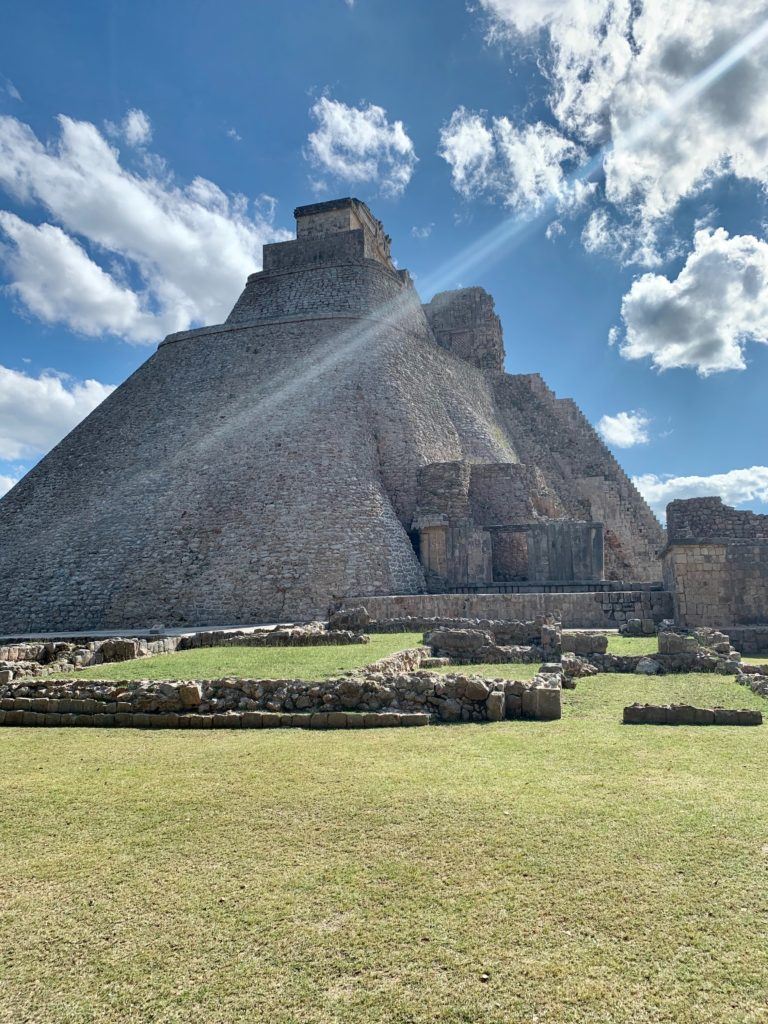
The entrance to the archaeological site is about 5 miles from the ruins themselves, so you will have to take a colectivo or rent a bike to get there. While it’s a lengthy bike ride, it’s quite scenic and can be a fun way to take in the jungle atmosphere.
Only the center of the city of Ek Balam has been excavated; archaeologists are working on uncovering the rest of it. If you take any of the short paths around the jungle on the outskirts of the site, you’ll see hills where there are likely more structures waiting to be discovered underneath the trees.
There is a lot of information to uncover about the site, so I highly recommend hiring a guide to walk you through. With a guide, you could spend 3-4 hours at Calakmul. Like most of the other sites, the best time to go is right when it opens, and avoid going on Sundays.
There is a common misconception that the Mayan people ceased to exist after the Spanish came, but the reality is quite the contrary. There are still Mayan communities tucked into the jungle all throughout the Yucatán Peninsula and parts of Chiapas. They continue to speak different dialects of Mayan and practice the same traditions and rituals from centuries ago. I’ve also taken quite a few Mayan classes — it’s a complex language that fascinates me.
- Cost: 418 pesos ($20). You’ll pay at two separate ticket windows.
- Hours: 8am to 5pm daily (the ticket booth closes at 4pm), even on holidays
- Transportation: You can take an ADO bus from Mérida to Uxmal, which takes about 2 hours. From Cancún, Playa del Carmen, or Tulum, there are also ADO buses that go to Uxmal, but make sure to check the schedule ahead of time as departures can be infrequent. If driving from Mérida, Uxmal is just an hour away.
- Parking: 80 pesos ($4)
- Getting around inside: The entire site is completely walkable, although it is expansive. Take it slow, find shade when you need to take a break, and bring plenty of water.
- Guides: There are English-speaking guides available on-site for around 500 pesos ($25).
- Tours: A tour from Mérida is a great option, and there is one that includes a visit to a chocolate museum along with a tour of Uxmal.
7. Ek Balam
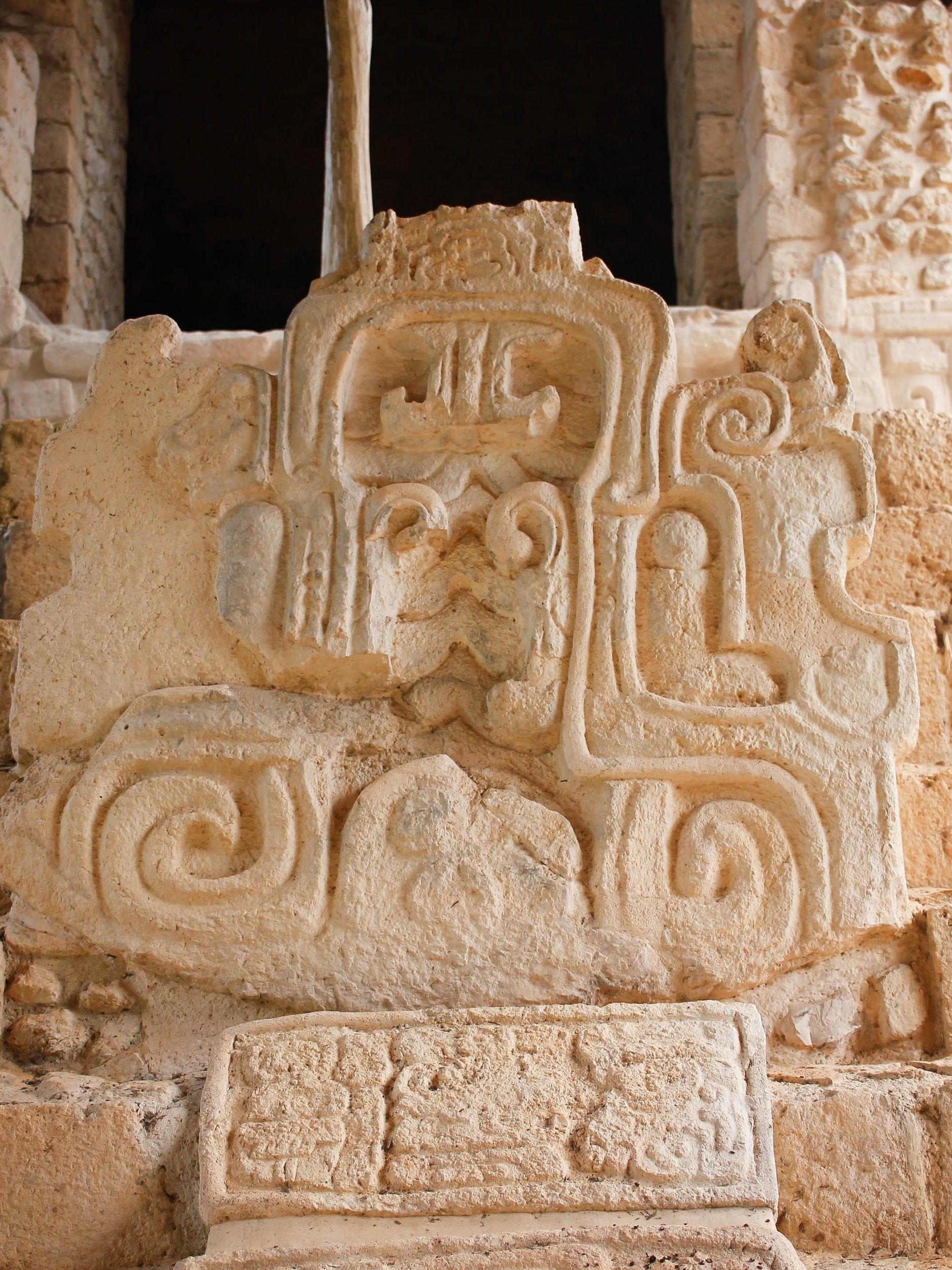
If you do happen to be in the area during the spring or autumn equinox, expect large crowds. The site hosts events to watch the lights and shadows, which are the most exciting events of the year. If you want to catch a glimpse of the shadow show, you might be able to see it up to two days before the actual equinox itself and avoid many of the crowds.
At one time, Uxmal and Chichén Itzá were the two most important cities in the Mayan Empire.
Muyil is a hidden gem that has the same level of incredible architecture as Tulum, but it’s more secluded and has a completely different environment. It borders the Sian Ka’an Biosphere, which is the area’s largest natural protected zone and is home to a plethora of native flora and fauna. You could spend an entire day exploring the grounds of Muyil and a bit of Sian Ka’an while you’re there.
The Tulum ruins, which have special spiritual and ceremonial significance in Mayan culture, are some of the most easily accessible in the region. There is also a staircase that leads down to a beach, which is a fun way break up your visit.
The Mayan Empire in Chiapas was distinct from the Yucatán Peninsula. There you’ll see a big difference in the architecture, city planning, and art motifs. Many of the best archaeological sites in Chiapas are in remote parts of the jungle, which is a unique and adventurous place to visit.
Besides the Nohoch Mul Pyramid, there are plenty of other treasures around Cobá. There is an ancient Mayan ball court and a network of stone highways called the sacbe. One of these is 62 miles long and connects Cobá with the ancient city of Yaxuna.
- Cost: 413 pesos ($21). You’ll pay at two separate ticket windows.
- Hours: 8am to 5pm daily (the ticket booth closes at 4pm), even on holidays
- Transportation: Ek Balam is about 13 miles north of Valladolid, which is where you’ll have to go first if traveling from Mérida, Playa del Carmen, Cancún, or Tulum. You can easily get to Valladolid via an ADO bus from any of those cities. At the intersection of 44th Street and 37th Street in Valladolid, you’ll find colectivos that can take you to Ek Balam for 50 pesos ($2.50).
- Parking: Free, but you should tip the attendants 5-10 pesos (25-50 cents) to “watch” your car.
- Getting around inside: The site is walkable, but if you want to get to the cenote, you can rent bikes on site and bike there and back.
- Guides: There are English-speaking guides available on-site for around 600 pesos (500 for Spanish) ($25-30).
- Tours: If staying in Mérida, there is a tour available on GetYourGuide that includes an indigenous craft workshop, a visit to Ek Balam, and a stop at Cenote Xcanche.
Campeche
About the author: Emily is a Mexico travel enthusiast based in San Cristóbal de las Casas, Chiapas. She is a part-time freelance writer for BMTM and a part-time doula.
It’s incredible to me that the structures and artifacts have stood the test of time. However, the most amazing thing is that the direct descendants of the ancient Mayan people continue to practice the same traditions and even some of the same building techniques of their ancestors.
The Mayan people are responsible for much of what is considered to be Mexican culture in these parts of the country. The cuisine is heavily influenced by Mayan recipes, certain phrases in Spanish have been adapted from Mayan words, and even the version of Catholicism practiced here has taken on certain aspects of Mayan beliefs and customs.
6. Becán
Want to learn more? A great way to start diving into the mundo maya is to take in some of the best archaeological sites. Having lived in the Zona Maya for a short time in college and then again for about a year, I have visited my fair share of ancient Mayan ruins, which are always a humble reminder of how incredible these civilizations were and how connected they were with nature and the cosmos.
Rainy season in this area of Chiapas begins in June and ends in late September, which is the worst time to go. The river tends to rise significantly during the rainy season, so transportation to the ruins can be dangerous. The best time to go is between October and March, as the temperatures are cooler and it is much drier.
Calakmul was once one of the most important Mayan cities in the lowlands region. Calakmul is considered to be one of the most structurally rich archaeological sites uncovered to date. It has 117 stelae (stone slabs with carvings), 8 sacbes (raised paved roads), and an extensive network of canals and water reservoirs.
- Cost: 65 pesos ($3.25)
- Hours: 8am to 5pm daily
- Transportation: The closest touristy city to Bacán is actually Bacalar, Quintana Roo. From there it’s about a 1.5-hour drive. There is one bus that goes from Bacalar to Xpujil, the nearest town to Bacán. The bus only runs once a day, however. Your best option to enjoy the ruins is to have a rental car; that way you can also check out Calakmul and other nearby sites that are further off the tourist track.
- Parking: Free
- Getting around inside: You can easily see everything at the site on foot.
- Guides: There are no guides at the ruins, but all the signs are in English.
- Tours: You really won’t find many (if any) tours including Bacán online. This is likely because of how far it is from popular sites. Not being a big tourist spot could actually be a good thing, because it means that there will be fewer visitors there.
5. Calakmul
Calakmul is easily one of my favorite Mayan ruins. The site is nestled in the heart of the Calakmul Biosphere, just 22 miles from the Guatemalan border. The biosphere itself is home to several species of monkeys, toucans, jaguars, and other native species.
This post was written by Emily Becker, BMTM’s resident Mexico travel expert.
Mayapán stands out from other more popular sites because of its murals. While other sites’ murals have heavily deteriorated, the ones at Mayapán’s Hall of the Frescoes have withstood the test of time. Another key feature of the site is the collection of beheaded warriors carved into the stucco on the side of one of the substructures next to the main pyramid.
Palenque’s location in the lush mountains of Chiapas and the multiplatformed structures give the site a harmonious feel. The greenery is completely different from the Yucatán Peninsula, and the architecture is distinct.
- Cost: 80 pesos ($4) to enter the archaeological site, 160 pesos ($8) total in fees to enter the biosphere and access the road to the ruins.
- Hours: 8am to 5pm daily; the ticket booth closes at 4pm
- Transportation: It’s easiest to get there by rental car. You can also take an ADO bus from Cancún to Xpujil (it takes 8 hours), which makes stops in Playa del Carmen, Tulum, and Bacalar, so you can get on the bus in any of those cities. There are some hotels near Xpujil if you want to explore the Calakmul biosphere for more than just one day. From Xpujil, you can take a taxi to Calakmul for around 500 pesos ($25).
- Parking: Free
- Getting around inside: While the ruins are easy to explore on foot, the biosphere is not. If you want to see the biosphere, a tour is the best way to do it.
- Guides: There aren’t many English-speaking guides available at the site, so it’s best to arrange a guide at your hotel if staying in Xpujil.
- Tours: Ka’an Expeditions is the best place to book a tour of the ruins and biosphere. They have several options, including a sunrise hike at the biosphere and opportunities to connect with the nearby Maya communities.
4. Edzná
If Chichén Itzá is the mother of all Mayan ruins, Mayapán is the daughter. This site is small yet mighty and has many of the same features of Chichén but scaled down significantly. For example, Mayapán has a much smaller version of the famous Kukulkán pyramid.
Since Mayapán is much less crowded than other sites, you can visit at any time of day and any day of the week (except Sundays, when the site is free for Mexican residents and therefore more crowded) and find very few people. The heat of Yucatán is intense in the early afternoon, so aim to visit either in the morning or late afternoon around 3pm until the park closes at 5pm.
I wouldn’t recommend trying to visit Yaxchilán on your own, as it can be complicated to coordinate buses, colectivos, and the boat. Even if you drive yourself, finding a boat to take you can be tricky. The best way to visit is on a tour, which also includes a guide and takes off the pressure of having to do extra planning.
- Cost: 65 pesos ($3.25)
- Hours: 8am to 5pm daily
- Transportation: There is a colectivo that runs from the main market in Campeche City to Edzná for 80 pesos ($4) and takes about an hour. Otherwise you can take a taxi from Campeche for around 400 pesos ($20). From Mérida, the drive is about 3 hours if you rent a car. Otherwise, you can take an ADO bus to Campeche and then travel to Edzná from there.
- Parking: Free
- Getting around inside: It is completely accessible by foot.
- Guides: There aren’t any English-speaking guides available for hire at the site itself, but you can request one at your hotel in Campeche or Mérida to accompany you.
- Tours: If you’re staying in Mérida, there is a full-day tour available that goes to Campeche and includes a stop at Edzná.
Chiapas
The Temple of Inscriptions is perhaps the most important structure on the grounds. When it was discovered, archaeologists were baffled by the 80-foot staircase that descends to the burial chamber of King Paka, the most powerful ruler of Palenque. While the innermost chambers of the tomb are now closed to the public, much of it remains open and is fascinating to explore.
While the sites throughout the Yucatán Peninsula boast nearby cenotes and beaches, those in Chiapas are nestled in the mountains, along rivers, and near some of the country’s best waterfalls. Intrigued? Here are my top three Mayan ruins in Chiapas:
3. Palenque
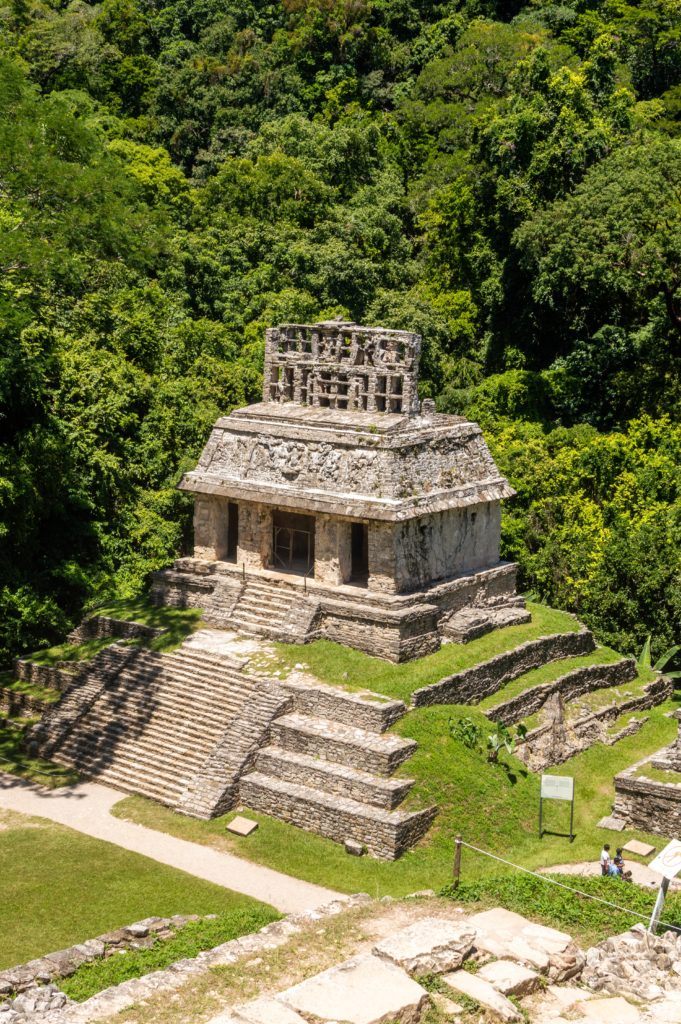
Bonampak is much easier to get to on your own without a tour than Yaxchilán, but I still recommend visiting on a tour that also includes neighboring Yaxchilán, which has a similar history. Transportation in this area of Chiapas can be unpredictable, and the highway should be avoided after dark.
Being a coastal state, the history of the ruins in Quintana Roo differs from other places where the Mayas built their cities. The Mayas of Quintana Roo were and continue to be fishers and expert marine navigators, which impacted how they built the structures that now lie in ruin throughout the state. Here are a few of the best ruins to check out there:
Located along the Usumacinta River, which divides Mexico and Guatemala, this remote site is one of the most sacred places in Chiapas for the Lacandon Maya people of the area, who make pilgrimages there. The structures on the grounds have beautifully preserved stucco carvings, altars, stelae, and murals. These features tell the story of the ancient civilization and led archaeologists to conclude that Yaxchilán was at war with Palenque for many years before it eventually fell.
The primary part of the ancient city of Becán is surrounded by a 16-foot deep moat and includes 20 structures in total. The best thing about Becán is its unique architecture and remote location, as you might be able to spot some wildlife.
These ruins are between Lago Cobá and Lago Macanxoc in the jungle. This is unique, because it was once the most populated Mayan city, with over 50,000 people living there at its peak.
- Cost: 80 pesos ($4), plus 35 pesos ($1.75) to enter the national park, plus 20 pesos ($1) for a quick ride to the entrance of the site
- Hours: 8:30am to 5pm daily (the ticket booth closes at 3pm)
- Transportation: The town of Palenque is fine to stay overnight in, and there are colectivos outside of the ADO bus station marked with “Ruinas” that can take you to the ruins for 40 pesos ($2). If you’re traveling from San Cristóbal de las Casas, the drive is about 5.5 hours via rental car, and up to 8 hours via ADO bus.
- Parking: Free
- Getting around inside: The site itself is a bit smaller than Chichén Itzá, so it’s completely accessible on foot. If you want to explore the national park around the archaeological site, you might want to consider taking a taxi or driving to the different entrances.
- Guides: There are English-speaking guides giving tours in groups, which cost about 200-300 pesos ($10-15) per person, depending on the size of the group.
- Tours: There are plenty of amazing tours available for Palenque on GetYourGuide. This one from San Cristóbal de las Casas includes stops at two waterfalls along with a guided tour of the Palenque ruins.
2. Yaxchilán
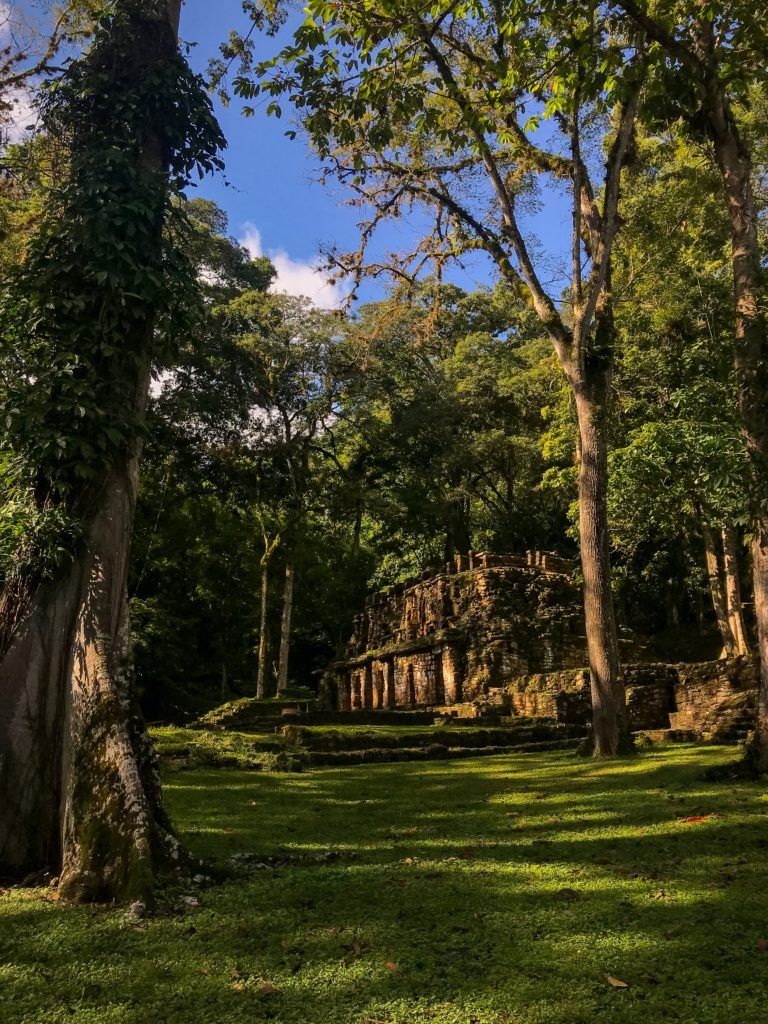
Pin me for later:
There is a small hidden path behind the main castle of the ruins, which leads you to a wooden hut. There you can pay 50 pesos (.50) to enter the Sian Ka’an Biosphere. This path will take you to an observation deck where you can gaze out onto the lagoon behind the ruins and take in the jungle views.
Stepping foot on any one of these archaeological sites feels surreal. I often find myself closing my eyes and trying to imagine what these cities looked like back in their prime. It’s hard to imagine the stone buildings filled with people bustling about, selling fruit, and praying at places of worship, but that’s how these cities used to thrive. They were civilizations with advanced mathematical systems in place, some more advanced than those in Europe during the same era.
The tallest structure at Edzná is the Gran Acropolis, which is a 5-level pyramid with a small room at the top. You can climb up and take a peek inside. Another must-see is the Temple of Masks, which is a small building with two stucco masks: one represents the Sunrise God to the east, and the other the Sunset God to the west.
- Cost: About 30 pesos ($1.50), although there is no official information about the entrance fee provided by the Mexican government
- Hours: 8am to 3pm daily
- Transportation: From San Cristóbal or Palenque, you can take an ADO bus or colectivo to Frontera Corozal. From there, you can take a boat to the ruins. The boat costs 1,200 pesos total ($60), divided by however many people are aboard. The boat will wait to fill up, which can take hours unless someone offers to pay for the remaining seats. For this reason, I only recommend visiting Yaxchilán on a tour from either San Cristóbal or Palenque.
- Parking: There are free places to park at the boat launch in Frontera Corozal, but you will have to pay an attendant 5-10 pesos (25-50 cents) to watch your car.
- Getting around inside: The entire site is walkable.
- Guides: Once you get to the site, there are no guides available, and the only modern structure is a tiny ticket booth. If you want a guide, you’ll have to hire one in Frontera Corozal unless you’re on a guided tour.
- Tours: From Palenque, you can take a tour of Yaxchilán and Bonampak with stops in the Lacandon jungle.
1. Bonampak
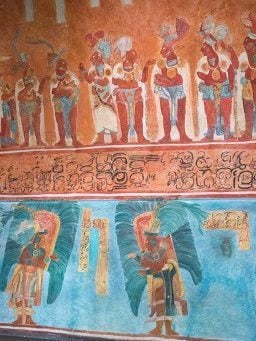
It gets very hot in Tulum in the afternoon, which is why I recommend going to the ruins as early as possible, so you can spend the rest of your day floating in a cenote or at the beach. Like all other ruins in Quintana Roo, avoid going on a Sunday, when entry is free for Mexican residents, as that is the busiest time of the week.
There you’ll also find the pristinely preserved stone carvings that make Ek Balam special. These carvings include feathered serpents that are quite common in Mayan art and sculpture. There are also jaguar sculptures that celebrate the site’s namesake, balam, which means jaguar in Mayan.
The state of Quintana Roo (also known as the Riviera Maya) is full of incredible archaeological sites. While most of its tourism comes from beach resorts in and near Cancún, Playa del Carmen, and Tulum, there is so much more to see there.
- Cost: 75 pesos ($3.75)
- Hours: 8am to 4:30pm daily; access closes at 3pm
- Transportation: From Palenque, you can take a 3-hour bus, which will drop you off about 2 miles from the entrance to the ruins. From there, you can take a colectivo to the entrance. If you opt out of taking a tour, the easiest way to visit Bonampak on your own is via rental car, which you can drive right up to the ruins.
- Getting around inside: The entire site is walkable.
- Guides: Once you get to the site, there is only a small ticket booth and bathrooms. There are no English-speaking guides available, but the plaques around the ruins are all in Spanish and English.
- Tours: From Palenque, you can take a tour of Yaxchilán and Bonampak with stops in different places in the Lacandon jungle.
Before You Visit:
- Make sure to have cash: Most sites (even Chichén Itzá) don’t accept cards of any kind, so make sure that you have enough pesos on hand to pay for your entrance, parking, food, and anything else before you go. If the site happens to have an ATM, it will likely charge an absurd fee to withdraw money, so it’s best to arrive prepared.
- Pack like a pro: Do not forget that many of these sites are located in remote places, often in the jungle. Come prepared with bug spray (eco-friendly whenever possible) and sun protection. Wear comfortable shoes and clothes that you won’t mind getting sweaty in.
- Study up: I’ve noticed that the stories that some guides tell foreigners about the sites are a bit embellished and not always historically accurate. I think this happens as a result of overtourism in these places. I suggest reading up a bit on the sites you want to visit before you go. That way, it will be much easier to decipher fact from fiction if you happen to get a guide that likes to stretch the truth a bit.
- Respect the rules: Some sites will have signs advising visitors to avoid touching or climbing on the ruins. Most of the time there won’t be anyone there to make sure the rules are followed, so please obey the signs. They are there for a reason, and your epic Insta post isn’t worth damaging and disrespecting the ruins.
Map of the Ruins
This unique archaeological site is often overlooked and therefore doesn’t attract very large crowds. Beyond a ticket booth and a bathroom, the site doesn’t have any other amenities, so make sure to bring anything you need for the day with you, including snacks and plenty of water. Visit in the morning, so you don’t have to travel back to Mérida or Campeche after the sun sets.
The ancient Mayan Empire extended throughout the present-day Yucatán Peninsula, Chiapas, and into parts of Guatemala, Honduras, and Belize. There is a lot of mystery around and speculation about what happened to some of these cities, as many of them had been abandoned even prior to the arrival of the Spanish in the 16th century. Some stories say the Mayas received messages from the heavens warning them about the colonizers; some believe that the residents died from disease and famine, among other things.
Many archaeologists consider Yucatán to be the heart of the Mayan civilization. There you’ll find some of the most well-preserved sites, likely because the state’s government has invested so much in them. Yucatán the state is not to be confused with the Yucatán Peninsula, which also contains the Mexican states of Campeche and Quintana Roo, plus parts of Belize and Guatemala. The state of Yucatán has its own cultural identity and history, which is waiting to be discovered at one of its many archaeological sites:
Like many other ruins, the main attraction at Ek Balam is the 96-foot pyramid in the center of the site. You can still climb to the top of it, which gives a sweet view of the surrounding jungle. Part of the restoration of the site included rebuilding the wooden and palm structures, so you’ll see thatched roofs at the top of the pyramid.
Here are my favorites, by state:
span,.formkit-form[data-uid=”ff60a8d270″] .formkit-submit:hover > span,.formkit-form[data-uid=”ff60a8d270″] .formkit-button:focus > span,.formkit-form[data-uid=”ff60a8d270″] .formkit-submit:focus > span{background-color:rgba(0,0,0,0.1);}.formkit-form[data-uid=”ff60a8d270″] .formkit-button > span,.formkit-form[data-uid=”ff60a8d270″] .formkit-submit > span{display:block;-webkit-transition:all 300ms ease-in-out;transition:all 300ms ease-in-out;padding:12px 24px;}.formkit-form[data-uid=”ff60a8d270″] .formkit-input{background:#ffffff;font-size:15px;padding:12px;border:1px solid #e3e3e3;-webkit-flex:1 0 auto;-ms-flex:1 0 auto;flex:1 0 auto;line-height:1.4;margin:0;-webkit-transition:border-color ease-out 300ms;transition:border-color ease-out 300ms;}.formkit-form[data-uid=”ff60a8d270″] .formkit-input:focus{outline:none;border-color:#1677be;-webkit-transition:border-color ease 300ms;transition:border-color ease 300ms;}.formkit-form[data-uid=”ff60a8d270″] .formkit-input::-webkit-input-placeholder{color:inherit;opacity:0.8;}.formkit-form[data-uid=”ff60a8d270″] .formkit-input::-moz-placeholder{color:inherit;opacity:0.8;}.formkit-form[data-uid=”ff60a8d270″] .formkit-input:-ms-input-placeholder{color:inherit;opacity:0.8;}.formkit-form[data-uid=”ff60a8d270″] .formkit-input::placeholder{color:inherit;opacity:0.8;}.formkit-form[data-uid=”ff60a8d270″] [data-group=”dropdown”]{position:relative;display:inline-block;width:100%;}.formkit-form[data-uid=”ff60a8d270″] [data-group=”dropdown”]::before{content:””;top:calc(50% – 2.5px);right:10px;position:absolute;pointer-events:none;border-color:#4f4f4f transparent transparent transparent;border-style:solid;border-width:6px 6px 0 6px;height:0;width:0;z-index:999;}.formkit-form[data-uid=”ff60a8d270″] [data-group=”dropdown”] select{height:auto;width:100%;cursor:pointer;color:#333333;line-height:1.4;margin-bottom:0;padding:0 6px;-webkit-appearance:none;-moz-appearance:none;appearance:none;font-size:15px;padding:12px;padding-right:25px;border:1px solid #e3e3e3;background:#ffffff;}.formkit-form[data-uid=”ff60a8d270″] [data-group=”dropdown”] select:focus{outline:none;}.formkit-form[data-uid=”ff60a8d270″] [data-group=”checkboxes”]{text-align:left;margin:0;}.formkit-form[data-uid=”ff60a8d270″] [data-group=”checkboxes”] [data-group=”checkbox”]{margin-bottom:10px;}.formkit-form[data-uid=”ff60a8d270″] [data-group=”checkboxes”] [data-group=”checkbox”] *{cursor:pointer;}.formkit-form[data-uid=”ff60a8d270″] [data-group=”checkboxes”] [data-group=”checkbox”]:last-of-type{margin-bottom:0;}.formkit-form[data-uid=”ff60a8d270″] [data-group=”checkboxes”] [data-group=”checkbox”] input[type=”checkbox”]{display:none;}.formkit-form[data-uid=”ff60a8d270″] [data-group=”checkboxes”] [data-group=”checkbox”] input[type=”checkbox”] + label::after{content:none;}.formkit-form[data-uid=”ff60a8d270″] [data-group=”checkboxes”] [data-group=”checkbox”] input[type=”checkbox”]:checked + label::after{border-color:#ffffff;content:””;}.formkit-form[data-uid=”ff60a8d270″] [data-group=”checkboxes”] [data-group=”checkbox”] input[type=”checkbox”]:checked + label::before{background:#10bf7a;border-color:#10bf7a;}.formkit-form[data-uid=”ff60a8d270″] [data-group=”checkboxes”] [data-group=”checkbox”] label{position:relative;display:inline-block;padding-left:28px;}.formkit-form[data-uid=”ff60a8d270″] [data-group=”checkboxes”] [data-group=”checkbox”] label::before,.formkit-form[data-uid=”ff60a8d270″] [data-group=”checkboxes”] [data-group=”checkbox”] label::after{position:absolute;content:””;display:inline-block;}.formkit-form[data-uid=”ff60a8d270″] [data-group=”checkboxes”] [data-group=”checkbox”] label::before{height:16px;width:16px;border:1px solid #e3e3e3;background:#ffffff;left:0px;top:3px;}.formkit-form[data-uid=”ff60a8d270″] [data-group=”checkboxes”] [data-group=”checkbox”] label::after{height:4px;width:8px;border-left:2px solid #4d4d4d;border-bottom:2px solid #4d4d4d;-webkit-transform:rotate(-45deg);-ms-transform:rotate(-45deg);transform:rotate(-45deg);left:4px;top:8px;}.formkit-form[data-uid=”ff60a8d270″] .formkit-alert{background:#f9fafb;border:1px solid #e3e3e3;border-radius:5px;-webkit-flex:1 0 auto;-ms-flex:1 0 auto;flex:1 0 auto;list-style:none;margin:25px auto;padding:12px;text-align:center;width:100%;}.formkit-form[data-uid=”ff60a8d270″] .formkit-alert:empty{display:none;}.formkit-form[data-uid=”ff60a8d270″] .formkit-alert-success{background:#d3fbeb;border-color:#10bf7a;color:#0c905c;}.formkit-form[data-uid=”ff60a8d270″] .formkit-alert-error{background:#fde8e2;border-color:#f2643b;color:#ea4110;}.formkit-form[data-uid=”ff60a8d270″] .formkit-spinner{display:-webkit-box;display:-webkit-flex;display:-ms-flexbox;display:flex;height:0px;width:0px;margin:0 auto;position:absolute;top:0;left:0;right:0;width:0px;overflow:hidden;text-align:center;-webkit-transition:all 300ms ease-in-out;transition:all 300ms ease-in-out;}.formkit-form[data-uid=”ff60a8d270″] .formkit-spinner > div{margin:auto;width:12px;height:12px;background-color:#fff;opacity:0.3;border-radius:100%;display:inline-block;-webkit-animation:formkit-bouncedelay-formkit-form-data-uid-ff60a8d270- 1.4s infinite ease-in-out both;animation:formkit-bouncedelay-formkit-form-data-uid-ff60a8d270- 1.4s infinite ease-in-out both;}.formkit-form[data-uid=”ff60a8d270″] .formkit-spinner > div:nth-child(1){-webkit-animation-delay:-0.32s;animation-delay:-0.32s;}.formkit-form[data-uid=”ff60a8d270″] .formkit-spinner > div:nth-child(2){-webkit-animation-delay:-0.16s;animation-delay:-0.16s;}.formkit-form[data-uid=”ff60a8d270″] .formkit-submit[data-active] .formkit-spinner{opacity:1;height:100%;width:50px;}.formkit-form[data-uid=”ff60a8d270″] .formkit-submit[data-active] .formkit-spinner ~ span{opacity:0;}.formkit-form[data-uid=”ff60a8d270″] .formkit-powered-by[data-active=”false”]{opacity:0.35;}@-webkit-keyframes formkit-bouncedelay-formkit-form-data-uid-ff60a8d270-{0%,80%,100%{-webkit-transform:scale(0);-ms-transform:scale(0);transform:scale(0);}40%{-webkit-transform:scale(1);-ms-transform:scale(1);transform:scale(1);}}@keyframes formkit-bouncedelay-formkit-form-data-uid-ff60a8d270-{0%,80%,100%{-webkit-transform:scale(0);-ms-transform:scale(0);transform:scale(0);}40%{-webkit-transform:scale(1);-ms-transform:scale(1);transform:scale(1);}}.formkit-form[data-uid=”ff60a8d270″] blockquote{padding:10px 20px;margin:0 0 20px;border-left:5px solid #e1e1e1;} .formkit-form[data-uid=”ff60a8d270″]{max-width:700px;}.formkit-form[data-uid=”ff60a8d270″] [data-style=”clean”]{width:100%;}.formkit-form[data-uid=”ff60a8d270″] .formkit-fields{display:-webkit-box;display:-webkit-flex;display:-ms-flexbox;display:flex;-webkit-flex-wrap:wrap;-ms-flex-wrap:wrap;flex-wrap:wrap;margin:0 auto;}.formkit-form[data-uid=”ff60a8d270″] .formkit-field,.formkit-form[data-uid=”ff60a8d270″] .formkit-submit{margin:0 0 15px 0;-webkit-flex:1 0 100%;-ms-flex:1 0 100%;flex:1 0 100%;}.formkit-form[data-uid=”ff60a8d270″] .formkit-powered-by{color:#7d7d7d;display:block;font-size:12px;margin:0;text-align:center;}.formkit-form[data-uid=”ff60a8d270″][min-width~=”700″] [data-style=”clean”],.formkit-form[data-uid=”ff60a8d270″][min-width~=”800″] [data-style=”clean”]{padding:10px;}.formkit-form[data-uid=”ff60a8d270″][min-width~=”700″] .formkit-fields[data-stacked=”false”],.formkit-form[data-uid=”ff60a8d270″][min-width~=”800″] .formkit-fields[data-stacked=”false”]{margin-left:-5px;margin-right:-5px;}.formkit-form[data-uid=”ff60a8d270″][min-width~=”700″] .formkit-fields[data-stacked=”false”] .formkit-field,.formkit-form[data-uid=”ff60a8d270″][min-width~=”800″] .formkit-fields[data-stacked=”false”] .formkit-field,.formkit-form[data-uid=”ff60a8d270″][min-width~=”700″] .formkit-fields[data-stacked=”false”] .formkit-submit,.formkit-form[data-uid=”ff60a8d270″][min-width~=”800″] .formkit-fields[data-stacked=”false”] .formkit-submit{margin:0 5px 15px 5px;}.formkit-form[data-uid=”ff60a8d270″][min-width~=”700″] .formkit-fields[data-stacked=”false”] .formkit-field,.formkit-form[data-uid=”ff60a8d270″][min-width~=”800″] .formkit-fields[data-stacked=”false”] .formkit-field{-webkit-flex:100 1 auto;-ms-flex:100 1 auto;flex:100 1 auto;}.formkit-form[data-uid=”ff60a8d270″][min-width~=”700″] .formkit-fields[data-stacked=”false”] .formkit-submit,.formkit-form[data-uid=”ff60a8d270″][min-width~=”800″] .formkit-fields[data-stacked=”false”] .formkit-submit{-webkit-flex:1 1 auto;-ms-flex:1 1 auto;flex:1 1 auto;} ]]>
